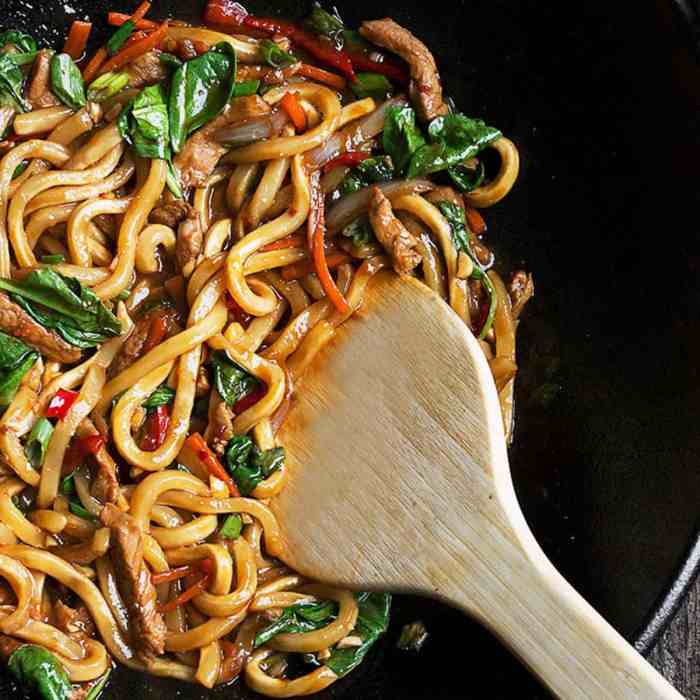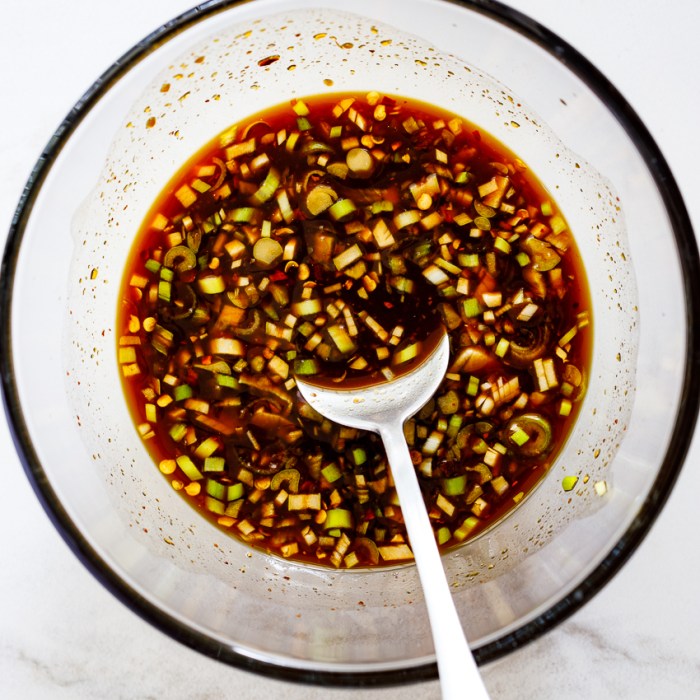Basic Stir Fry Sauce Recipe A Comprehensive Guide
Understanding Basic Stir-Fry Sauce Components
Basic stir fry sauce recipe – A basic stir-fry sauce is the backbone of countless delicious dishes. Its versatility lies in the simple yet powerful combination of a few key ingredients that can be adjusted to create a wide spectrum of flavors. Understanding these components is crucial for creating a well-balanced and flavorful sauce.
Fundamental Stir-Fry Sauce Ingredients, Basic stir fry sauce recipe
Most basic stir-fry sauces rely on a combination of soy sauce, vinegar, and sugar. Soy sauce provides saltiness and umami, the savory taste that gives depth to the dish. Vinegar offers acidity, balancing the sweetness and adding brightness. Sugar contributes sweetness, which helps to round out the other flavors and create a harmonious taste profile. Other common additions include sesame oil (for aroma and richness), garlic (for pungency), and ginger (for warmth and a subtle spiciness).
Soy Sauce Variations
The type of soy sauce used significantly impacts the final flavor of the stir-fry sauce. Light soy sauce is thinner and lighter in color, providing a milder saltiness. Dark soy sauce is thicker, darker, and richer in flavor, adding a deeper, more intense savory note. Tamari, a gluten-free soy sauce, has a slightly sweeter and less salty taste compared to regular soy sauce.
Stir-Fry Sauce Base Comparison
| Sauce Base | Sweetness Level | Saltiness Level | Umami Level |
|---|---|---|---|
| Light Soy Sauce | Low | Medium | Medium |
| Dark Soy Sauce | Low-Medium | Medium-High | High |
| Tamari | Medium | Medium-Low | Medium-High |
| Combination (Light & Dark Soy Sauce) | Low-Medium | Medium | High |
Recipe Variations: Sweet, Savory, and Spicy

Source: seasonsandsuppers.ca
The beauty of a basic stir-fry sauce lies in its adaptability. By simply adjusting the ratios of the core ingredients, you can easily create variations to suit different palates and dishes. Below are three distinct recipes showcasing the versatility of this simple sauce.
Mastering a basic stir-fry sauce recipe is key to many delicious Asian-inspired dishes. The foundation of a good stir-fry, however, often relies on a balance of sweet, savory, and umami flavors, quite different from the richness found in a baked crab legs in butter sauce recipe. Yet, understanding the principles of flavor balance in one recipe can easily translate to success in another, enhancing your culinary skills across various cuisines.
Ultimately, the versatility of basic sauce-making is invaluable.
- Sweet Stir-Fry Sauce: 2 tbsp light soy sauce, 1 tbsp rice vinegar, 2 tbsp brown sugar, 1 tbsp water, 1 tsp sesame oil. This balances sweetness with a subtle tang, perfect for stir-fries with chicken or pork.
- Savory Stir-Fry Sauce: 3 tbsp light soy sauce, 1 tbsp rice vinegar, 1 tbsp dark soy sauce, 1 tsp grated ginger, 1 clove minced garlic. This offers a rich, umami-forward flavor profile, ideal for beef or tofu stir-fries.
- Spicy Stir-Fry Sauce: 2 tbsp soy sauce, 1 tbsp rice vinegar, 1 tbsp chili garlic sauce, 1 tsp sesame oil, ½ tsp red pepper flakes. This provides a fiery kick, best suited for stir-fries with shrimp or vegetables.
Thickening Agents and Consistency: Basic Stir Fry Sauce Recipe
Achieving the desired consistency in your stir-fry sauce is key to a satisfying culinary experience. Several thickening agents can be used, each offering unique properties and influencing the final texture of the sauce.
Thickening Agent Comparison
Cornstarch is a common choice, creating a slightly glossy, slightly thinner sauce. Arrowroot powder yields a clearer, slightly thicker sauce that doesn’t cloud as easily. Both are easily incorporated by mixing them with a small amount of cold water before adding to the simmering sauce.
Visual Guide to Sauce Consistency
Cornstarch produces a smooth, slightly glossy sauce with a relatively thin consistency. Arrowroot powder results in a clearer, slightly thicker sauce with a more refined texture. Using a combination of both can create a sauce that is both thick and glossy. If no thickening agent is used, the sauce will remain thin and watery.
Stir-Fry Sauce Applications and Pairings
The versatility of stir-fry sauces extends to a wide range of ingredients and dishes. The flavor profile of the sauce should complement the main ingredients, enhancing the overall taste experience.
| Sauce Type | Best Protein Pairings | Best Vegetable Pairings | Flavor Profile Description |
|---|---|---|---|
| Sweet | Chicken, Pork, Tofu | Broccoli, Bell Peppers, Carrots | Balanced sweetness with a subtle tang |
| Savory | Beef, Tofu, Mushrooms | Bok Choy, Spinach, Mushrooms | Rich, umami-forward with a hint of ginger and garlic |
| Spicy | Shrimp, Chicken, Beef | Snow peas, Broccoli, Peppers | Fiery and flavorful with a hint of sesame oil |
Storage and Shelf Life
Proper storage is essential to maintain the quality and safety of your homemade stir-fry sauce. Understanding how to store and preserve the sauce correctly will ensure it remains flavorful and safe for consumption.
Storage and Shelf Life Tips

Source: simply-delicious-food.com
Store leftover stir-fry sauce in an airtight container in the refrigerator for up to 5 days. To extend its shelf life, you can freeze the sauce. To freeze, pour the sauce into freezer-safe containers, leaving some headspace for expansion. Thaw the sauce overnight in the refrigerator before use.
Signs of spoilage include mold growth, off-odors, or unusual changes in color or texture. If any of these are observed, discard the sauce immediately.
Answers to Common Questions
Can I use honey instead of sugar in a stir-fry sauce?
Yes, honey works well as a sweetener in stir-fry sauces, adding a slightly different flavor profile. Just be mindful that it can darken the sauce.
How long can I store homemade stir-fry sauce in the refrigerator?
Properly stored in an airtight container in the refrigerator, homemade stir-fry sauce typically lasts for 3-5 days.
What happens if I use too much cornstarch?
Using too much cornstarch will result in a very thick, possibly gummy sauce. Start with a smaller amount and add more gradually until you reach your desired consistency.
Can I make a large batch of stir-fry sauce and freeze it?
Yes, you can freeze stir-fry sauce. Freeze it in airtight containers or freezer bags, leaving some headspace for expansion. Thaw it completely in the refrigerator before using.





















